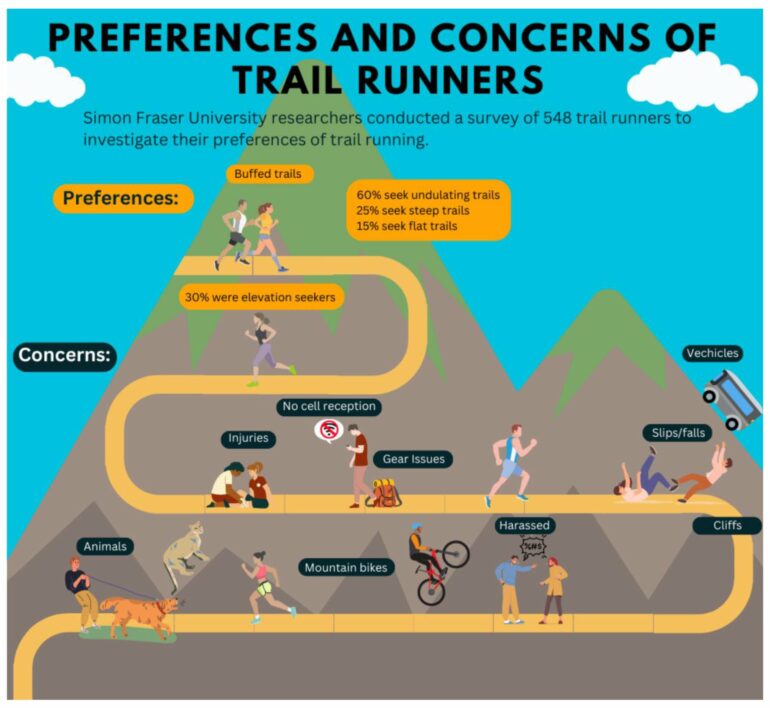Many studies have shown the health benefits of running, for both physical and psychological well-being. The researchers hope that, by identifying the features that are attractive to runners, they can help policymakers create environments that will promote an active and healthy lifestyle. Trail running has the added benefit of being immersed in nature, which is known to offer health benefits.
The study, published recently in the International Journal of Environmental Research and Public Health, asked 548 regular trail runners a series of questions to determine their preferences and concerns when engaged in the sport.
The leading concern for all trail runners (women and men alike) was slipping or falling (55.1%). The concerns of men and women differed, however, when asked about encountering other people or wild animals, and the loss of phone reception on trails.
Women respondents reported a far greater fear of other people (38.9%) and cougars (32.4%) than men, (12.6% and 21.2% respectively). In addition, 50.8% of women were concerned by loss of reception, compared with 33.8% of men.
“I think that women are just more concerned about their safety than men, and for good reasons,” says Nadine Schuurman, a professor in SFU’s department of geography and the lead investigator on the paper. “We all see news stories about threats to women.”
Schuurman also points to social factors that disproportionally prevent women from getting out to run in the trails.
“Something I really want to look at in a future survey is how women are also constrained by household chores and childcare, because trail running is time consuming,” says Schuurman. “You tend to go slower, so it takes longer to cover a distance than it does on the road, and you may have to drive to the trailhead, so it just requires a greater commitment. I think that those are disincentives for women, especially.”
As well as their concerns, the researchers also asked the runners about their preferences in terms of terrain and other factors. Most respondents preferred undulating trails (57.2%), rather than steep (22.6%) or fairly flat (16.3%) routes. They also favored “buffed out” trails (56.0%) over rocky terrain (40.3%).
The research paper is the latest in a series of studies examining different factors in “runnability”—a term the researchers coined to assist in quantifying features of the built environment that facilitate or hinder running as a form of leisure or sport activity. Previous papers have examined the preferences of road runners and the neighborhood characteristics that encourage running around Metro Vancouver.
The researchers plan to continue studying “runnability,” including a future survey of popular running routes using data from activity tracking app Strava, and examining the environmental factors that the most popular routes share.
“We’re really honing-in or what specific environmental correlates are associated with both urban and rural running, or trail running,” says Schuurman. “Runnability is different from walkability or bikeability, and we’re actually looking at what makes a good running route and how you can encourage runners.”
More information:
Leah Rosenkrantz et al, Environmental Preferences and Concerns of Recreational Trail Runners, International Journal of Environmental Research and Public Health (2024). DOI: 10.3390/ijerph21010097
Provided by
Simon Fraser University
Citation:
Fears of attack and no phone signal deter women trail runners, finds study (2024, June 28)



